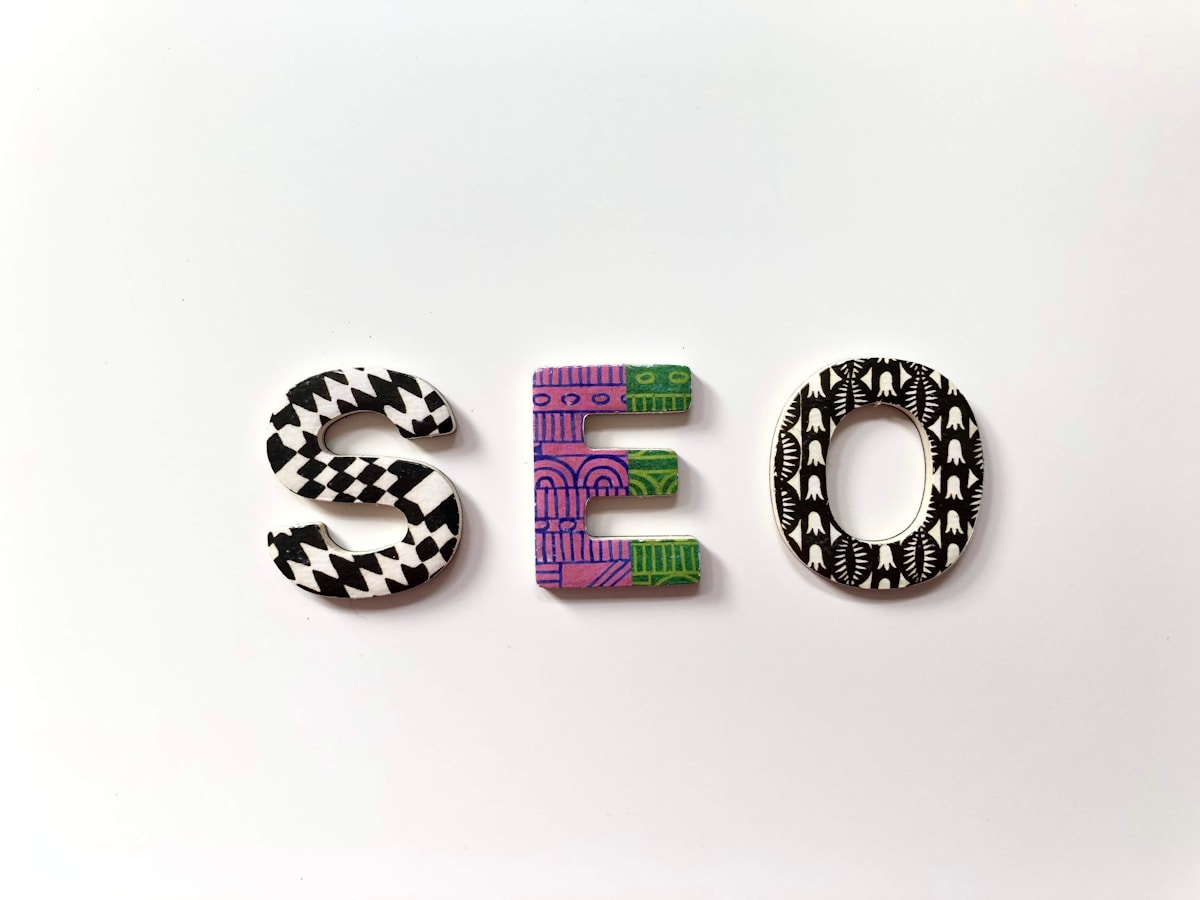Load Faster, Rank Higher: SEO-Friendly Ways To Improve Website Performance
Load Faster, Rank Higher: SEO-Friendly Ways To Improve Website Performance

In today's digital landscape, having a website that performs well is crucial for SEO success. Search engines like Google prioritize websites that load quickly and provide a seamless user experience. In this article, we will explore the importance of website performance for SEO and provide valuable tips on improving your website's performance to rank higher in search results.
The Importance Of Website Performance For SEO
Website performance plays a significant role in search engine optimization (SEO). When users search for information or products online, they expect instant results. Visitors will likely leave and look elsewhere if your website takes too long to load, leading to high bounce rates.
Search engines consider various factors when determining the ranking of websites, and website speed is one of them. Google has even confirmed that page loading speed is a ranking factor in its algorithm. Improving your website's performance increases the chances of ranking higher in search results and attracting more organic traffic.
How To Improve Website Performance To Rank Higher In Search Results?
There are several key areas you should focus on to optimize your website for better performance:
- Optimizing Images. Choose the right file format for images, compress them without sacrificing quality, and implement lazy loading techniques to improve loading speed.
- Minimizing HTTP Requests. Combine CSS and JavaScript files, reduce the number of external scripts and stylesheets, and utilize browser caching to minimize the number of requests made by the browser.
- Streamlining Website Code. Remove unnecessary code and white spaces from HTML, CSS, and JavaScript files. Minify these files by removing comments and unnecessary characters while maintaining functionality.
- Mobile Optimization. Ensure your website is mobile-friendly as mobile usage continues to rise. Implement responsive design techniques that adapt your site's layout based on different screen sizes.
- Content Delivery Network (CDN). Reduce the distance between your website and its users and increase loading speed by using a CDN to spread the content of your website over several servers located worldwide.
With regards to improving your website performance, you can either engage an SEO Company or do it yourself, as Strikingly is an impactful tool that can help you optimize your website. With its intuitive drag-and-drop interface, you can easily create and customize a high-performing website without coding knowledge.
Strikingly offers features that contribute to better website performance, such as built-in image optimization, automatic minification of code files, and mobile-responsive templates. Using Strikingly, you can implement these SEO-friendly tips and boost your website's performance and rankings.
Optimizing your website's performance is crucial for SEO success. Following these tips on improving your website performance and leveraging tools like Strikingly can enhance user experience, increase search engine visibility, and drive more organic traffic to your site. Take action today and start reaping the benefits of a high-performing website!
Understanding The Impact Of Website Performance On SEO

Website performance is crucial in SEO, affecting your website's visibility and ranking in search results. Understanding the impact of website performance on SEO can help you implement effective strategies to improve website performance and boost its rankings.
Why Website Loading Speed Matters For SEO?
Website loading speed is critical to user experience and search engine rankings. Slow-loading websites frustrate users, leading to high bounce rates and decreased engagement. Additionally, search engines prioritize fast-loading websites because they provide a better user experience.
A slow-loading website can negatively impact your SEO efforts in several ways:
- Increased bounce rates. Users are more likely to leave a website if it takes too long to load, resulting in higher bounce rates.
- Decreased dwell time. Slow-loading websites often lead to shorter dwell times, indicating that users need more time to engage with your content.
- Lower conversion rates. Users are less likely to convert or purchase if they wait for the website to load.
Tips On How To Improve Website Performance - Optimize your website's loading speed:
1) Optimize image sizes by compressing them without sacrificing quality.
2) Use lazy loading techniques to prioritize visible content first.
3) Minimize HTTP requests by combining CSS and JavaScript files.
4) Leverage browser caching to store static resources locally.
The Correlation Between Website Performance And Ranking
Website performance is closely tied to search engine rankings. Search engines like Google consider various factors when determining where a website should rank in search results, and one of those factors is how well the site performs.
Search engines prioritize websites that present a seamless browsing experience by considering factors such as:
- Loading speed. Fast-loading websites are more likely to rank higher in search results.
- Mobile optimization. Mobile-friendly and responsive websites tend to rank better.
- User engagement metrics. Metrics like dwell time, bounce rate, and click-through rates are indicators of user satisfaction and can influence rankings.
Improving your website's performance increases the chances of ranking higher in search results and attracting more organic traffic. It can ultimately lead to more conversions and business growth.
How Does User Experience Affect SEO?
User experience (UX) is crucial to website performance and SEO. Search engines aim to provide their users with the best possible experience by prioritizing websites that deliver high-quality content, easy navigation, and fast loading times.
A positive user experience can benefit your website's SEO efforts in several ways:
- Lower bounce rates. Users with a positive experience on your website are more likely to stay longer and explore further.
- Increased dwell time. Engaging content and intuitive navigation encourage users to spend more time on your site.
- Higher conversion rates. A seamless user experience can increase conversions, such as form submissions or purchases.
Tips On How To Improve Website Performance - Improve user experience on your website:
- Ensure intuitive navigation with clear menus and logical page hierarchy.
- Use engaging visuals, videos, or infographics to enhance content.
- Optimize your website for mobile devices with a responsive design.
You create a positive impression on visitors and search engines by prioritizing user experience alongside other performance factors.
Understanding the impact of website performance on SEO is crucial for improving your website's visibility and rankings in search results. You can improve website performance and functionality and draw in more natural visitors by optimizing loading speed, mobile optimization, user engagement metrics, and overall user experience. Today, implement these ‘tips on improving your website performance' to boost your online presence.
Optimizing Images For Faster Loading Speed

Images must be optimized to increase the performance of your website. Images are important for drawing in and keeping visitors, but if optimized properly, they can prevent your site from loading slowly. The following section will explore three key strategies for optimizing images to achieve faster loading speed.
Choosing The Right File Format For Images
The choice of file format for your images can significantly impact website performance. There are three commonly used image formats: JPEG, PNG, and GIF. Each format has its strengths and weaknesses, so it's essential to choose the right one based on the type of image.
JPEG is ideal for photographs or complex images with many colors and gradients. It offers high compression rates without sacrificing much quality, making it perfect for reducing file size and improving loading speed.
PNG is best suited for transparent images or simple graphics with fewer colors. It provides lossless compression, meaning it retains all the original image data without losing quality. However, PNG files tend to be larger compared to JPEGs.
GIF is primarily used for animated images or simple graphics with limited colors. While GIF files can be quite small, they have limited color support and are unsuitable for high-quality photographs.
Choosing the appropriate file format based on your image content can significantly reduce file sizes and enhance website performance.
Compressing Images Without Sacrificing Quality
Compressing images without compromising their quality is another effective technique for improving your website performance. Image compression reduces the file size by removing unnecessary data while maintaining visual fidelity.
There are various tools available online that can help you compress your images efficiently. These tools use advanced algorithms to analyze and optimize image files while preserving their appearance as much as possible.
When compressing images, aim for a balance between reducing file size and maintaining an acceptable level of visual quality. You can experiment with different compression levels to find the sweet spot that achieves optimal loading speed without noticeable degradation in image quality.
Lazy Loading For Improved Loading Speed
Lazy loading is a technique that can significantly improve website performance, especially regarding image-heavy pages. Instead of loading all images simultaneously, lazy loading defers the loading of images until they are about to come into view.
With lazy loading, only the images visible within the user's viewport are loaded initially. As the user scrolls down, additional images are loaded dynamically. Such an approach reduces the initial load time and improves overall page speed.
Implementing lazy loading requires some technical knowledge or using plugins specifically designed for this purpose. However, faster loading speed and improved user experience make it worthwhile.
You can optimize your website's images for faster loading speed and enhance overall performance by choosing the right file format, compressing images effectively, and implementing lazy loading.
Minimizing HTTP Requests

Minimizing your website's number of HTTP requests is crucial for improving its performance. Here are some effective strategies to achieve this:
Combining CSS And JavaScript Files
Combining multiple CSS and JavaScript files into one can significantly reduce your website's HTTP requests. Doing so eliminates the need for separate requests for each file, resulting in faster loading times. The optimization technique is especially useful for websites with multiple stylesheets and scripts.
Reducing The Number Of External Scripts And Stylesheets
External scripts and stylesheets can slow down your website's performance as they require additional HTTP requests to fetch them from external sources. To improve website performance, consider minimizing external resources or hosting them locally whenever possible. It reduces the dependency on external servers, resulting in faster loading times.
Utilizing Browser Caching
Browser caching allows storing certain website elements in a visitor's browser cache, such as images, CSS, and JavaScript files. It means that subsequent visits to your site will load these cached elements from the user's browser instead of making additional HTTP requests to your server.
Setting appropriate caching headers on your server can control how long these elements are stored in the cache before they expire and must be fetched again. Utilizing browser caching effectively reduces the number of HTTP requests returning visitors make, improving website performance.
Remember that optimizing your website's performance by minimizing HTTP requests is crucial for providing a seamless user experience and boosting SEO rankings. Combining CSS and JavaScript files, reducing external scripts and stylesheets, and effectively utilizing browser caching can significantly improve loading times and website performance.
Streamlining Website Code

It is essential to streamline the code of your website to improve website performance. Removing unnecessary code and white spaces allows you to optimize your website for faster loading speed and better user experience.
Removing Unnecessary Code And White Spaces
One effective way to improve website performance is by removing unnecessary code and white spaces from your website's HTML, CSS, and JavaScript files. These extra lines of code can slow down the loading speed of your website.
You can reduce the file size of your web pages, resulting in faster loading times, by eliminating unused or redundant code. Additionally, removing white spaces can make your code more readable and easier to maintain.
Minifying HTML, CSS, And JavaScript Files
Another technique to optimize your website's performance is minifying your HTML, CSS, and JavaScript files. Minification involves removing all unnecessary characters from these files without affecting their functionality.
The process eliminates comments, whitespace characters, line breaks, and other non-essential elements from the code. As a result, the file size is reduced significantly, leading to faster loading times for your web pages.
Leveraging Browser Caching
Leveraging browser caching effectively improves website performance by reducing server load and decreasing page load times for returning visitors. When users visit a webpage for the first time, their browser stores certain resources like images or scripts locally on their device.
You can temporarily instruct the user's browser to store them by setting appropriate caching headers on these resources. It allows subsequent visits to load these cached resources directly from the user's device instead of requesting them from the server again.
Utilizing browser caching improves loading speed and reduces bandwidth usage for users and servers.
Streamlining your website's code by removing unnecessary code and white spaces, minifying HTML, CSS, and JavaScript files, and leveraging browser caching can significantly improve website performance. These techniques help optimize loading speed and enhance user experience, leading to higher search engine rankings. Remember to implement these tips while optimizing your website for improved performance.
Mobile Optimization For Better Performance

Mobile optimization is crucial for improving website performance and enhancing SEO. With the increasing use of mobile devices, having a mobile-friendly website is essential to provide a seamless browsing experience for users. In this section, we will explore the importance of mobile-friendly websites for SEO, the impact of responsive design on loading speed, and some valuable tips to optimize your website for faster performance.
The Importance Of Mobile-Friendly Websites For SEO
Mobile-friendly websites are both convenient and necessary in today's digital landscape. Google prioritizes mobile-first indexing, meaning it primarily uses the mobile version of a website's content to determine its ranking in search results. The shift in Google's algorithm highlights the significance of having a responsive and mobile-optimized website.
Ensuring your website is mobile-friendly can improve user experience and increase engagement metrics such as bounce rate and time on site. These positive user signals indicate to search engines that your website provides valuable content, leading to higher rankings in search results.
Responsive Design And Its Impact On Loading Speed
Responsive design optimizes your website's loading speed across different devices. A responsive website automatically adjusts its layout and content based on the device's screen size.
A major advantage of responsive design is that it eliminates the need for separate desktop and mobile versions of your site. The consolidation reduces HTTP requests and minimizes code redundancy, resulting in faster loading times.
Additionally, responsive design allows you to optimize images for different screen sizes, ensuring they load quickly without compromising quality. Implementing responsive design techniques can significantly improve website performance, loading speed, and overall performance.
Mobile Optimization Tips For Faster Performance
To further enhance your website's performance on mobile devices, consider implementing these optimization tips:
- Optimize images. Compress images without sacrificing quality and use the appropriate file format to reduce file size. Lazy loading is also a useful technique that delays the loading of images until they are visible on the user's screen.
- Minimize CSS and JavaScript files. Combine multiple CSS and JavaScript files into a single file to minimize HTTP requests. Additionally, reduce the number of external scripts and stylesheets to streamline your website's code.
- Leverage browser caching. Utilize browser caching to store static resources, such as images, CSS, and JavaScript files, in the user's browser. It allows subsequent visits to your website to load faster since these resources are already stored locally.
Implementing these mobile optimization tips will significantly improve website performance on mobile devices, leading to better SEO rankings and enhanced user experience.
You can ensure that customers enjoy a flawless surfing experience regardless of their device by optimizing your website for mobile devices. It not only improves SEO rankings but also increases user engagement and conversions. Implement these mobile optimization techniques now and watch your website's performance soar!
Content Delivery Network (CDN) For Improved Loading Speed

What Is A CDN And How It Works?
A Content Delivery Network (CDN) is a network of servers in different geographical locations that work together to deliver website content to users more efficiently. When a user requests to access a website, the CDN identifies the server closest to the user's location and delivers the content from that server instead of the origin server where the website is hosted. It reduces latency and improves loading speed for users.
Benefits Of Using A CDN For Website Performance
Using a CDN offers several benefits for improving website performance:
- Faster loading speed. CDNs reduce latency and improve loading speed by delivering content from servers closer to users. It leads to better user experience and higher SEO rankings.
- Improved global reach. CDNs have servers located in various regions worldwide, allowing websites to reach audiences globally with faster load times.
- Scalability. CDNs can handle high traffic volumes without overloading the origin server, ensuring consistent performance even during peak periods.
- Enhanced security. CDNs often include security features such as DDoS protection and SSL/TLS encryption, safeguarding websites against cyber threats and boosting trustworthiness.
Setting Up A CDN For Your Website
To set up a CDN for your website, follow these steps:
- Choose a reputable CDN provider. Research different providers and select one that suits your pricing, features, and support needs.
- Sign up and create an account. Register with the chosen CDN provider and create an account.
- Configure your DNS settings. The CDN provider will provide you with DNS settings that must be updated on your domain's DNS configuration page.
- Enable caching options. Configure caching settings on your CDN dashboard to determine how long files should be cached on edge servers before being refreshed from the origin server.
- Test and monitor performance. After setting up the CDN, regularly test and monitor your website's performance to ensure optimal loading speed and user experience.
Remember, utilizing a CDN effectively improves website performance by reducing latency and delivering content faster to users worldwide.
How Can Strikingly Improve Website Performance
Strikingly offers several features and tools that can help improve your website's performance:
- Speed Optimization. Strikingly optimizes website loading speed automatically. It ensures that your site loads quickly, crucial for retaining visitors and improving SEO rankings.
- Mobile-Friendly Design. The templates on Strikingly are mobile-responsive by default. It means your website will look and function well on various devices, enhancing the user experience and SEO performance, as Google prioritizes mobile-friendly websites.

Image taken from Strikingly
- SEO Tools. It provides built-in SEO tools that allow you to optimize your website's meta tags, titles, and descriptions. You can customize URLs and add alt text to images, contributing to better rankings of search engines.

Image taken from Strikingly
- Image Optimization. The platform automatically compresses and optimizes images to reduce file sizes without compromising quality. It helps improve page loading times.
- SSL Security. Strikingly provides free SSL certificates for your website, which secures and positively influences SEO rankings, as Google favors secure websites.
- Analytics. The website builder offers analytics tools that allow you to track your website's performance. You can monitor visitor traffic, page views, and other key metrics to identify areas for improvement.

Image taken from Strikingly
- Custom Domain. Using a custom domain (e.g., www.yourwebsite.com) instead of a subdomain (e.g., yourwebsite.strikingly.com) can also boost your website's credibility and SEO rankings.

Image taken from Strikingly
- Customer Support. Strikingly provides customer support to resolve any issues affecting your website's performance.

Image taken from Strikingly
- Content Updates. Regularly update and refresh your website's content to keep it relevant and engaging for visitors. Strikingly's user-friendly editor makes it easy to make changes as needed.
Incorporating these features and following the best SEO and website design practices can help you leverage Strikingly's capabilities to improve your website's performance and overall online presence.
Conclusion
Boosting your website's performance is essential for higher search engine rankings and improved SEO. These SEO-friendly tips can optimize your site's loading speed, user experience, and mobile-friendliness. Start now to reap the benefits of increased exposure and traffic.
Strikingly is a powerful tool to enhance your website's performance. Its user-friendly interface and advanced capabilities make it easy to implement the recommended techniques and improve speed, responsiveness, and overall SEO.
Don't delay; optimize your website today! You'll move closer to better visibility, more visitors, and online success by taking action now.
Remember, website optimization is an ongoing effort. Regularly assess performance, make necessary adjustments, and stay updated with the latest SEO trends. With dedication and effort, you can build a high-performing website that excels in search engine results and provides an outstanding user experience.
